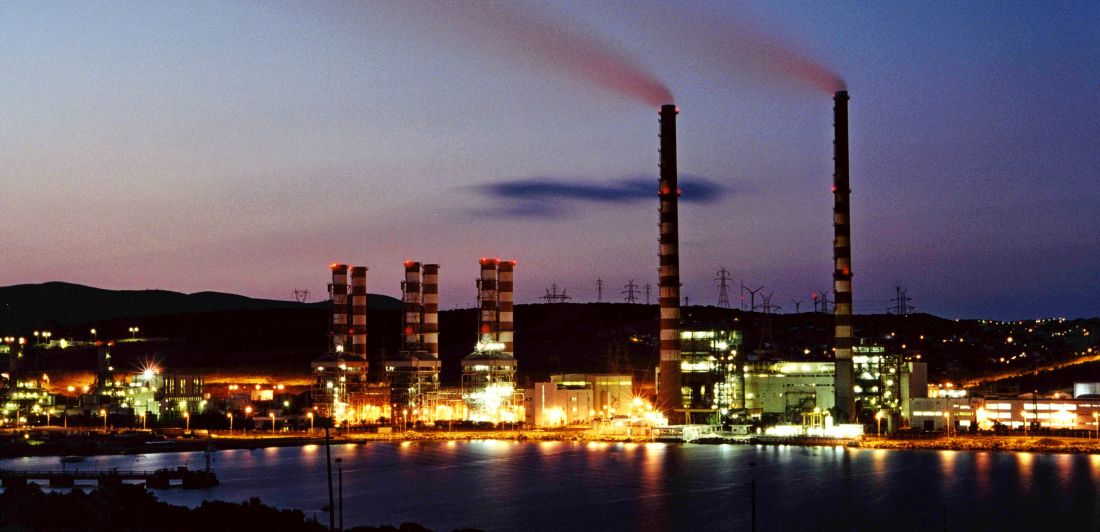1. Thermal generation
Agios Dimitrios TPP is the active lignite-fired power plant of PPC. It consists of 5 Units with a total installed capacity of 1,595 MWel.
The new Lignite Unit of PPC S.A., Ptolemaida V TPP, with an installed capacity of 660 MWel , is under construction and will be commissioned in 2022.
PPC has 2 wholly owned subsidiaries. Lignitiki Melitis S.A., which owns the Meliti TPP with a total installed capacity of 330 MWel and Lignitiki Megalopolis S.A., which owns Units III and IV of Megalopolis TPP. Currently the total installed capacity of Megalopolis Lignitiki is 600 MWel (2x300 MWel), while for Unit III a request for withdrawal has already been submitted.
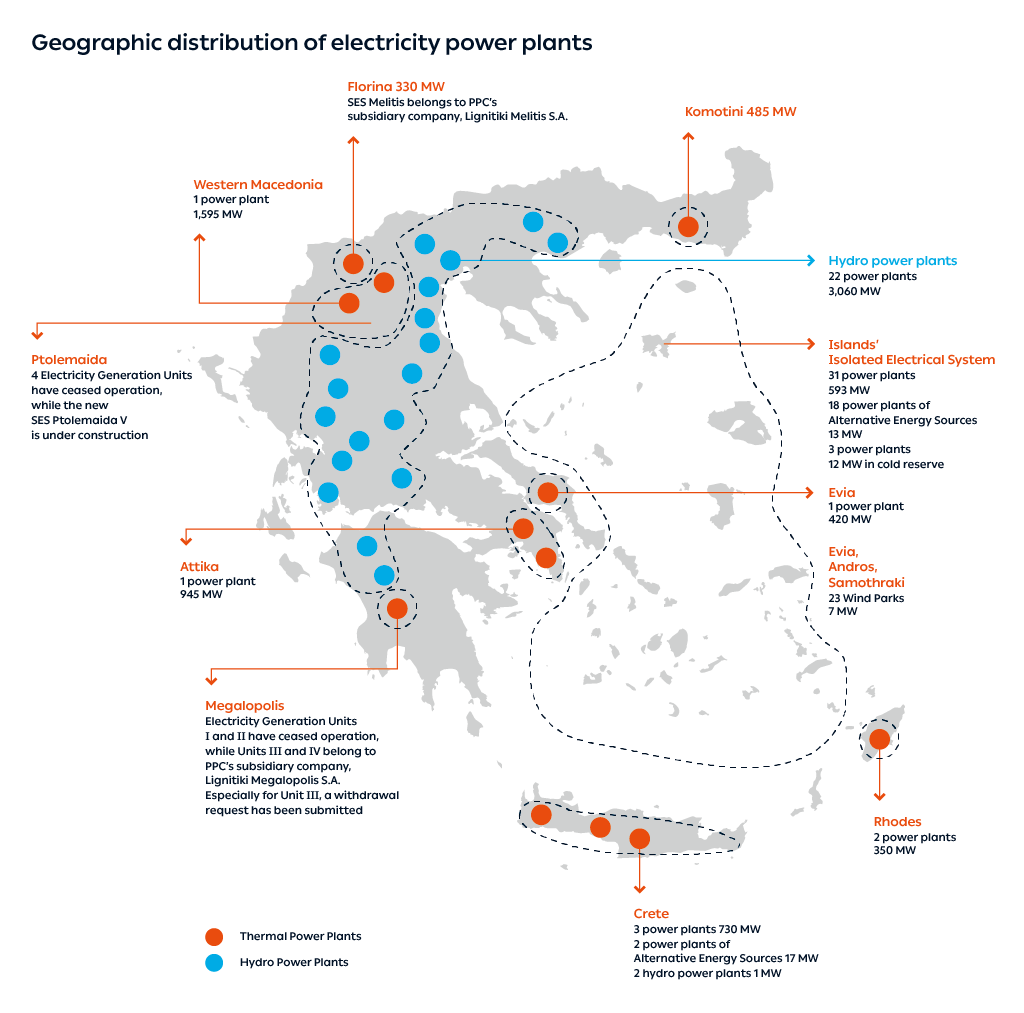
2. Lignite generation
The lignite mines, owned by PPC for the most part and by private companies, in the regions of Aliveri, Kozani - Ptolemaida - Florina and Megalopolis have provided, since 1955 and for a period of about 65 years, the lignite, an important energy fuel for the Greek economy, on which the country's electrification has been based since the establishment of the Company.
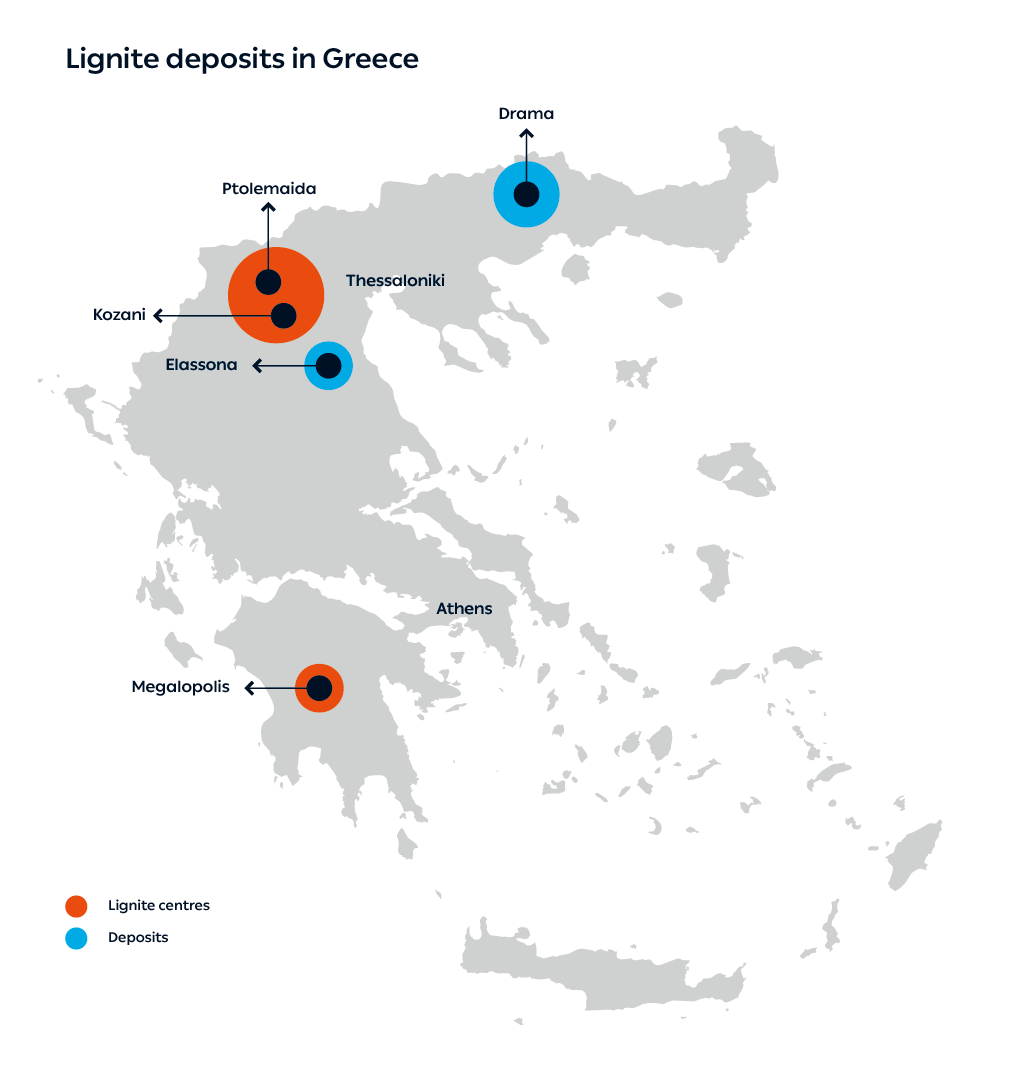
The first serious attempt to exploit lignite deposits in the country began in 1873 in Aliveri (Evia). The surface and underground mining facilities were destroyed in 1897 due to flooding. Exploitation resumed after the First World War. In the year 1922, the annual production reached 23,000 tons and was maintained until the year 1927. In the following year the mines were temporarily closed for economic reasons.
After the Second World War, the need to electrify the country led to the decision to build a thermal power plant in Aliveri. On 19 May 1951, a contract was signed between PPC and the German company PH.HOLZMANN A.G., subcontractor of PIERCE MANAGEMENT INC, according to which the company was to carry out works for the surface facilities in the Aliveri mine, as well as drilling and boring of wells 115 metres deep, galleries 1,750 metres long and an underground pumping station.
Officially, the Greek administration of PPC took over the management of this mine on 21 May 1954. Since then, the systematic and intensive exploitation of the lignite deposits began both with underground and surface mining in an area of approximately 1,700 stremma, installation of equipment and machinery and application of methods and related technology which were innovative and unique for that time in Greece, thus creating the first productive electricity system.
In 1981 the underground exploitation of the lignite was completed and a little later, in 1988, the surface exploitation, which had started in 1975, was completed. In total, 14,7 million tonnes of lignite were extracted from underground mining in the Aliveri mine and 3,9 million tonnes from surface mining.
However, the largest Lignite Centre of the country was developed in the wider area of Kozani - Ptolemaida - Florina with the development of surface mines (Main Field, Kardia Field, South Field, Amyntaio Field, Achlada and Kleidi). The first systematic surveys for the identification and evaluation of lignite deposits in this area began after 1938. In 1955, Liptol was founded with the aim to to exploit lignite and use it for the production of briquettes, nitrogenous fertilisers, semi-coke and electricity. In 1959, 90 % of the shares of Liptol were transferred to PPC and in 1975 the two companies merged. The production of lignite increased significantly, since the beginning of operation of the mines in 1957. In particular, from 1,4 million tonnes in 1960, it rose to 11,7 million tonnes in 1975, 27,3 million tonnes in 1985 and 55,8 million tonnes in 2002 (maximum production). Production was maintained at the level of 50 million tonnes per year until the year 2012, when a gradual decline began (Figure 2). In the year 2020, the lignite production from the mines in the area of the West Macedonia Lignite Centre (WMLC) was 10.3 million tonnes.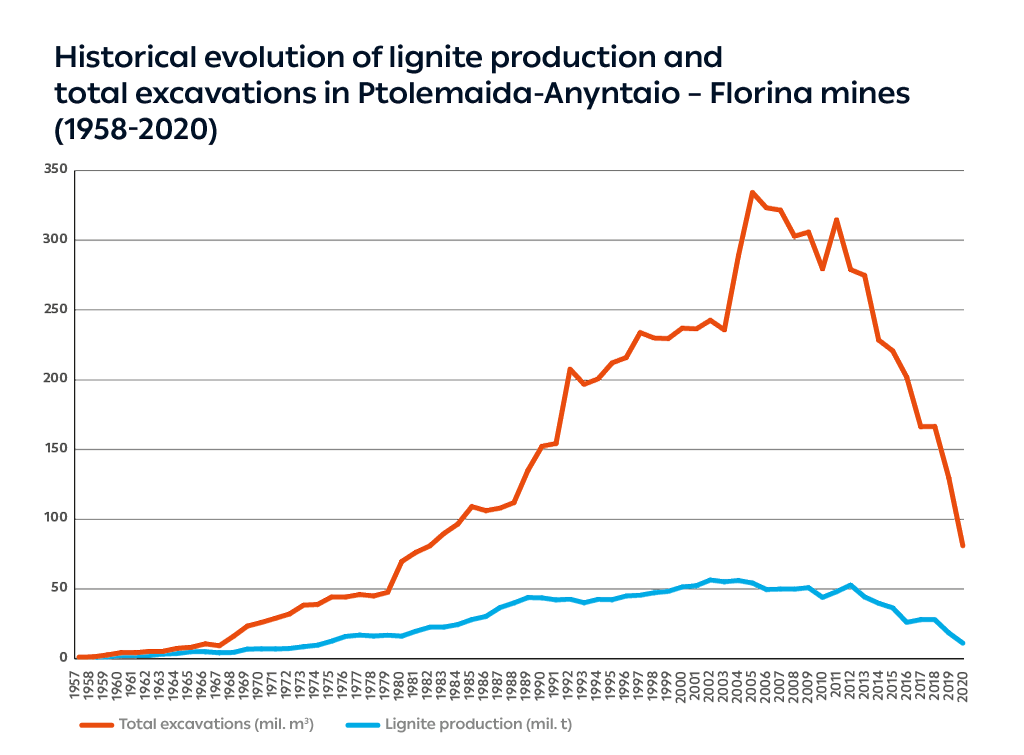
The second important Lignite Centre of Greece was developed in the area of Megalopolis in Arcadia, also with surface mines (Thoknia, Choremio, Kyparissia and Marathousa). The first survey of the Megalopolis lignite deposits was conducted in 1957 and the results were encouraging. Exploitation of the deposit in the area began in 1970 and it was the first time at the global level that lignite of such a low quality was mined and used for electricity generation. The annual production of lignite increased gradually from 4,1 million tonnes in 1971 to 14,5 million tonnes in 2002 (maximum production). Production was maintained at the level of 13-14 million tonnes per year until 2008, when a slight gradual decline began. In the five-year period 2015-2019, production was in the range of 6-8 million tonnes per year. In 2020 lignite production from the Megalopolis mines was 2.8 million tonnes (Figure 3).
In 2018, two subsidiaries were established under the tradenames Ligniki Melitis S.A. and Ligniki Megalopolis S.A. The assets, rights and liabilities relating to the lignite power generation activity in the area of Meliti in Florina and the wider area, where public lignite deposits have been located, were transferred to Ligniki Melitis S.A as a Sector, and the assets, rights and liabilities relating to the lignite power generation activity in the area of Megalopolis in Arcadia were transferred to Ligniki Megalopolis S.A.
In 2020, the production of lignite by PPC SA and its subsidiaries amounted to 13.1 million tonnes. In total, 2.2 billion tonnes of lignite were mined from the start of production at PPC's lignite mines until the end of the year 2020. For this production, a total of about 10 billion cubic metres of material was handled.
Regarding the percentage of participation of lignite units in the interconnected electricity generation system of Greece, in the period 1984-2005, was at very high levels, ranging from 64.2 % to 79.7 % (in 1989).
It should be noted that significant lignite exploration has been carried out for the Elassona and Drama lignite deposits, but no mines have been developed in these areas.
The rapid decline in lignite production is therefore related to the unfavourable market conditions and the withdrawal of lignite plants. The following generation facilities have already been definitively shut down and withdrawn (8/2021):
- Unit I, II, III and IV of the Ptolemaida TPP
- Unit I and II of the Liptol TPP
- Unit I, II, III and IV of the Aliveri TPP
- Unit I, II and III of Keratea-Lavrio TPP
- Units 8 and 9 of Agios Georgios TPP
- Units I, II, III and IV of Kardia TPP
- Units I and II of Amyntaio - Filotas TPP
- Amyntaio Field Mine
- Kardia Field Mine
and by the end of 2023 the production operation of the Megalopolis Mines will also be discontinued. Figures 4 and 5 show the estimated final boundaries of the Mines in the areas of Ptolemaida - Amyntaio and Megalopolis.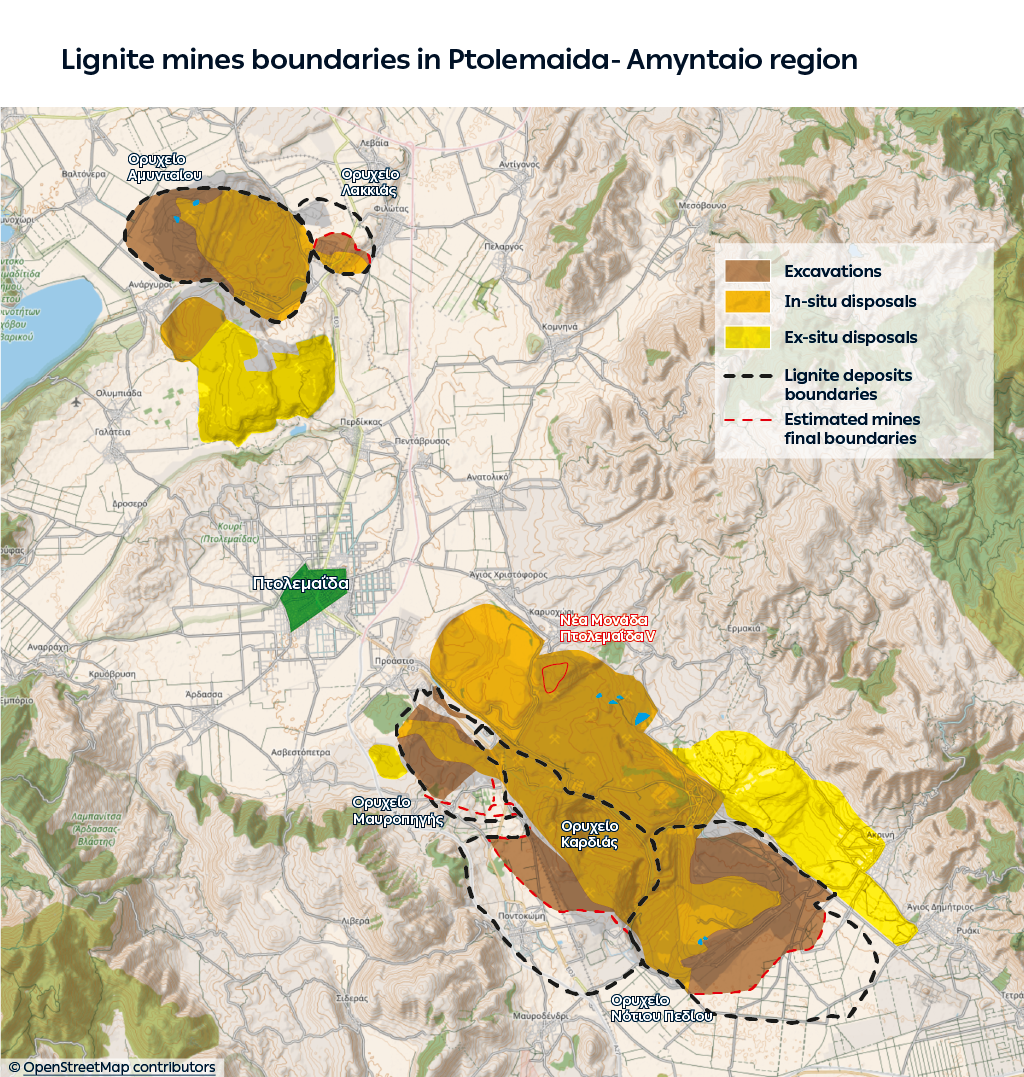
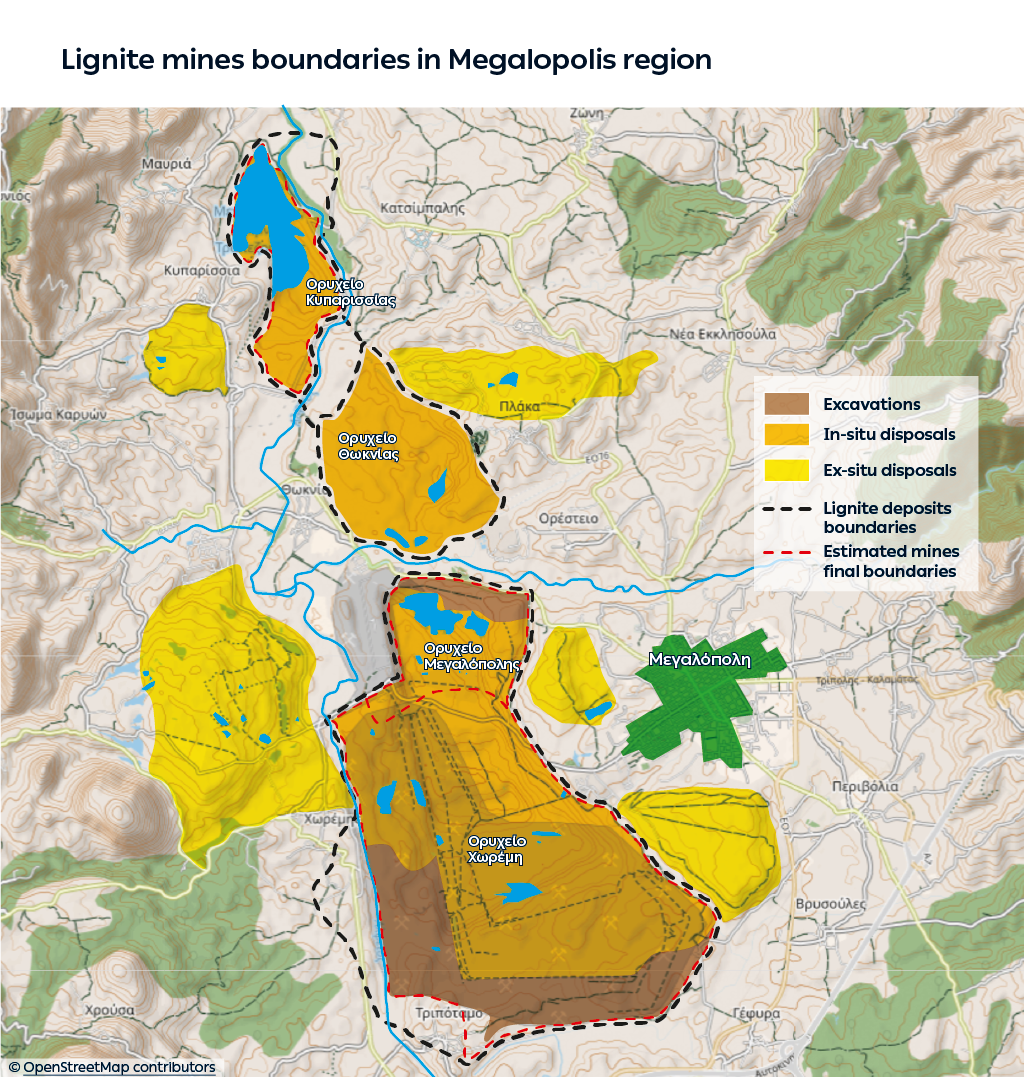
PPC has already developed a comprehensive plan for rapid lignite phase-out. In this context, the closure of the mines and the operational optimisation of lignite production have been planned, combined with optimal ecological restoration and utilisation of the respective areas, based on the circular economy principles.
Mines
In the West Macedonia Lignite Centre (WMLC), after the cessation of the operation of the Amyntaio - Lakkias and Kardia Mines, the South Field Mine and the Mavropigi Mine, which is part of the Central Field Mine Unit, are in operation.
These mines supply the units of the Agios Dimitrios Thermal Power Plant (TPP) and are expected to supply the new Unit V of the Ptolemaida TPP, for as long as it burns lignite.
Exploitation in these mines is carried out with the main continuous mining machinery (bucket wheel-excavators - conveyors - stackers) and supplemented by discontinuous mining machinery (reversed bucket excavators - earthmoving vehicles).
In the year 2020, the total lignite production from the two mines amounted to 8 million tonnes, with total excavations of 67.27 million cubic metres and an exploitation ratio (volume of gangue material per tonne of lignite) of 7.58 m3/t.
In the Megalopolis area (Lignitiki Megalopolis S.A.), the Choremio mine is in operation in the southern part of the basin, mainly with continuous mining machinery.
This mine supplies lignite to the Megalopolis B power plant, which is the only one in operation. The closure of the mine is expected around mid-2023.
In the year 2020, the production of lignite from the Choremio Mine amounted to 2.81 million tonnes, with a total excavation of 13.7 million cubic metres and an exploitation ratio of 4.03 m3/t.
With an eye to the future
The Company, being oriented towards clean energy, has already planned large-scale RES and energy storage projects in the mining areas, which will replace the lignite-fired power plants after their withdrawal from the generation network. In addition, in the context of a smooth social, environmental and economic transition of the regions in the post-lignite period, alternative uses and investments in new technologies in existing infrastructure are being considered, with particular emphasis on human resources and ecological restoration of soils.
The main areas of the Company's activity in the field of lignite phase out are:
- Restoring soils in the areas where lignite mining and power generation activities from lignite, fuel oil and natural gas have been developed. This includes works such as: restoration studies, earthworks for the final shaping of mine lands, topsoil spreading, planting, maintenance of plantations, demolition of buildings, dismantling of equipment, etc., which are carried out by the Company.
- Developing in the above areas of new, environmentally friendly activities by the Company (CCGT power plants, hybrid power plants, photovoltaic parks, energy storage stations, etc.), often in cooperation with other partners.
- Creating circular economy hubs in the above-mentioned areas.
- Utilising equipment and materials-spare parts of decommissioned production means in order to optimise benefit for the Company.
- Giving back rehabilitated land to local communities in the context of a smooth social, environmental and economic transition of the areas in the post-lignite period for the development of new activities.
PPC's strategic plan is fully compatible and complementary with the corresponding Just Transition Plan (JTP), which aims at a smooth and fair transition of the Region of West Macedonia and the Municipality of Megalopolis in the post-lignite period, introducing a new differentiated economic model in the core areas of the Lignite Phase Out Zones.
In October 2020, the New Production Activities Department was established to develop new production activities within the framework of the Company's business plan for the lignite phase out process, aiming at the maximum utilization of the assets of the decommissioned lignite production assets and the Company's relevant know-how.
